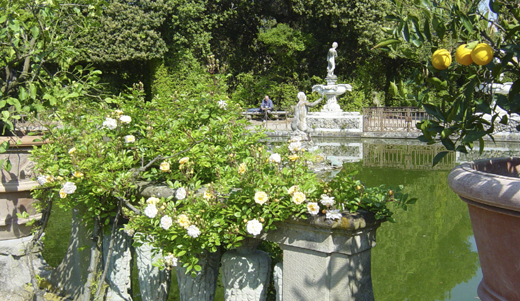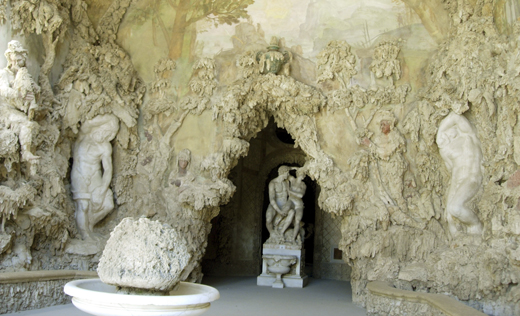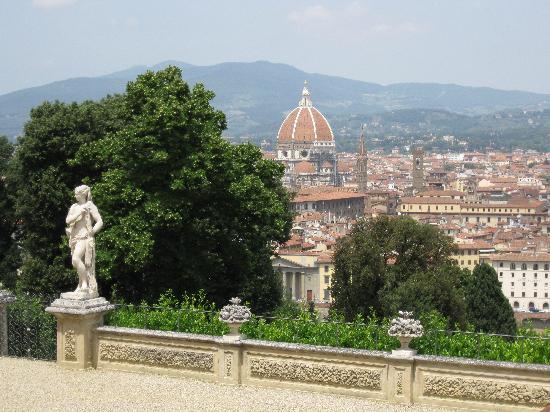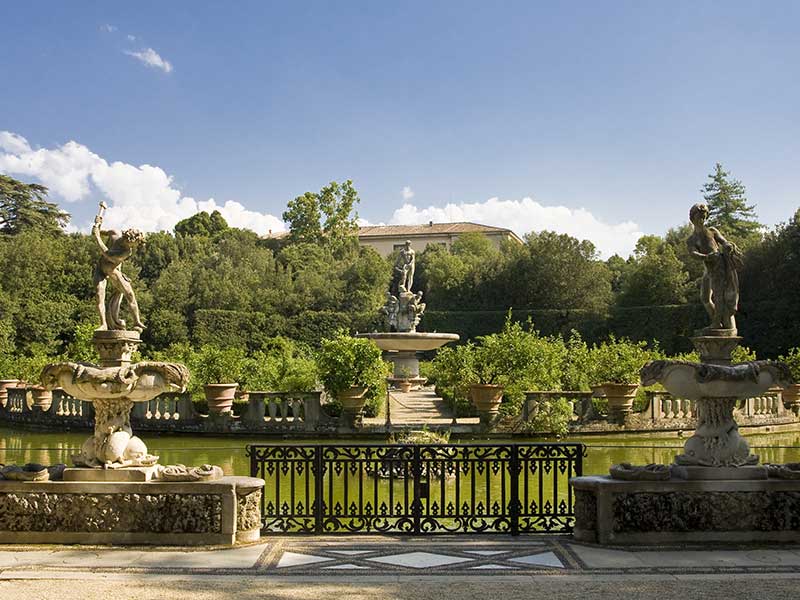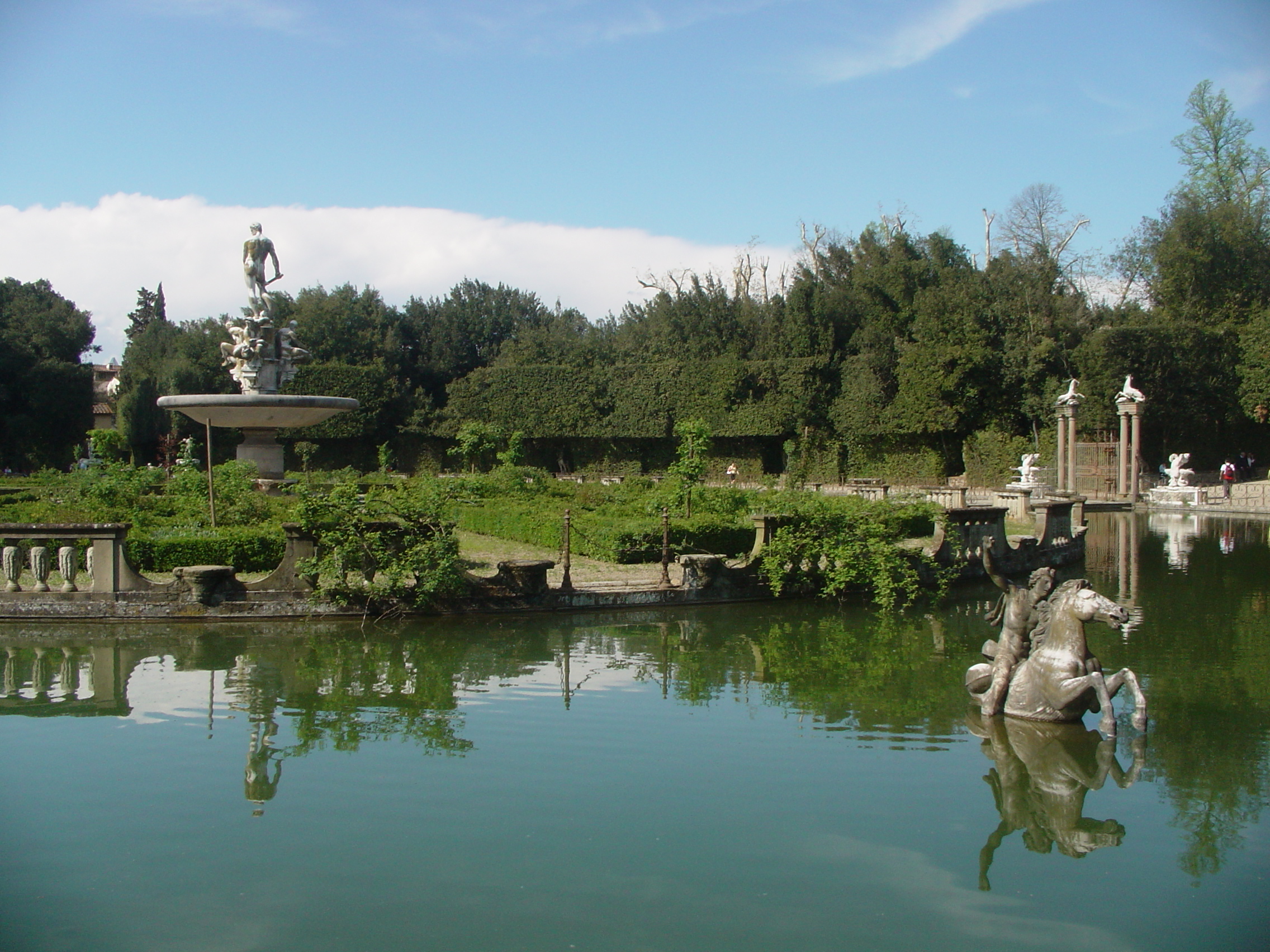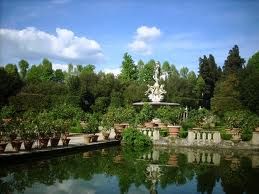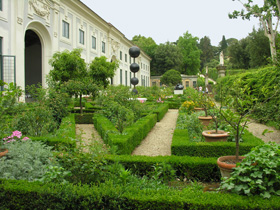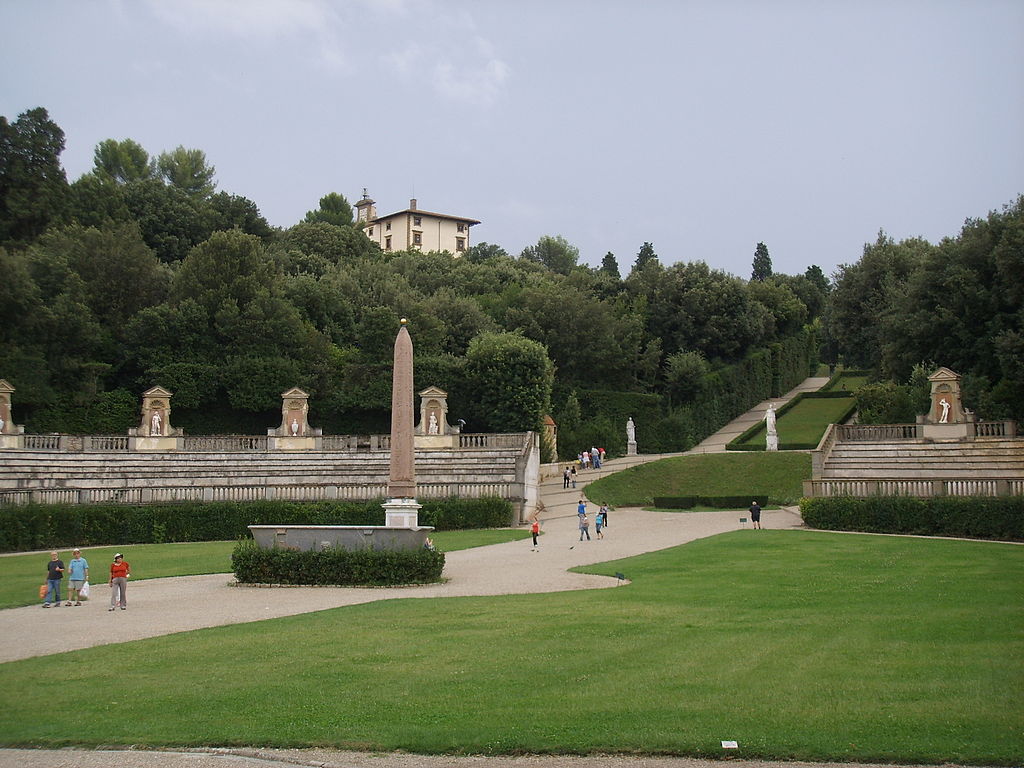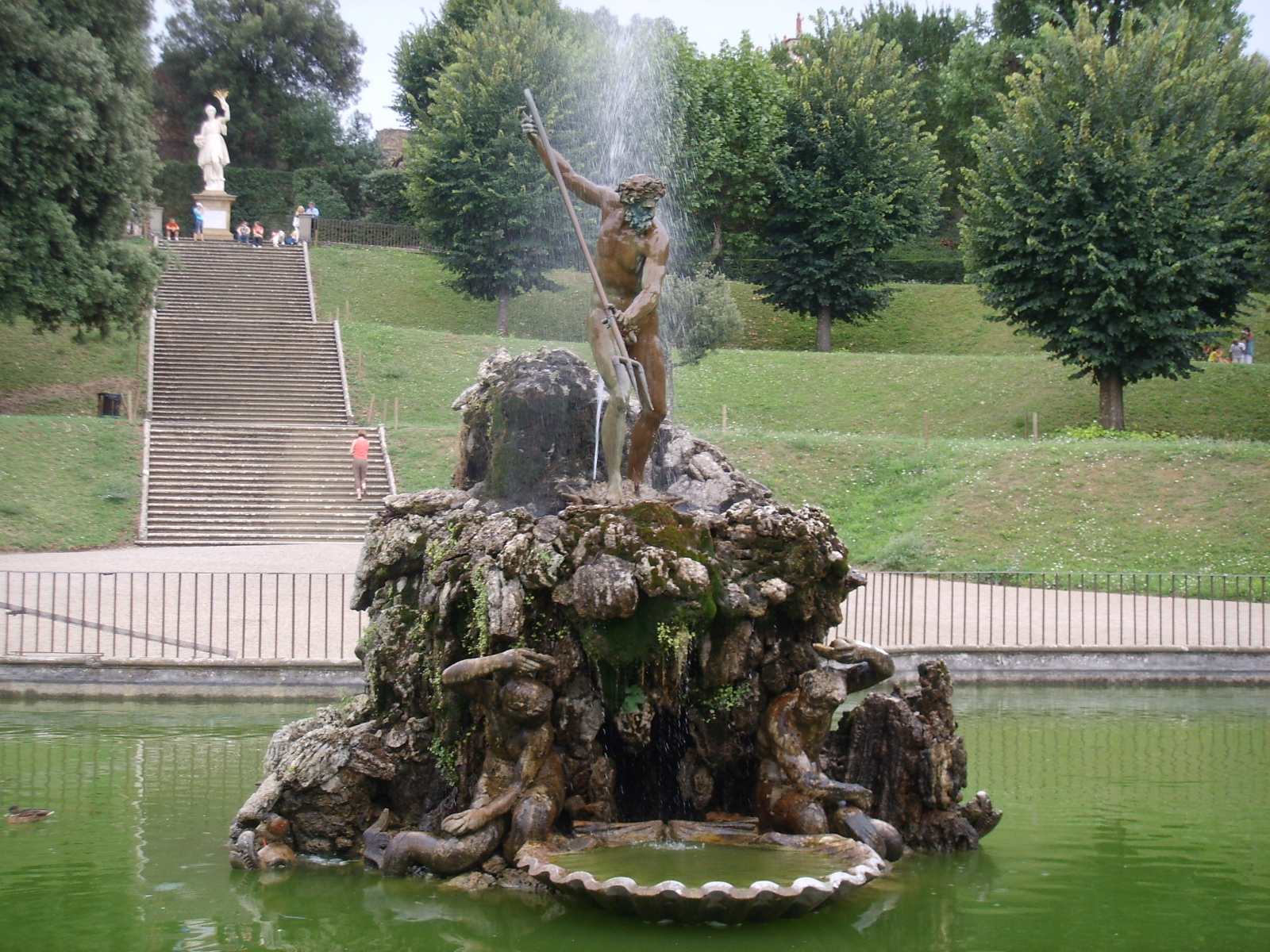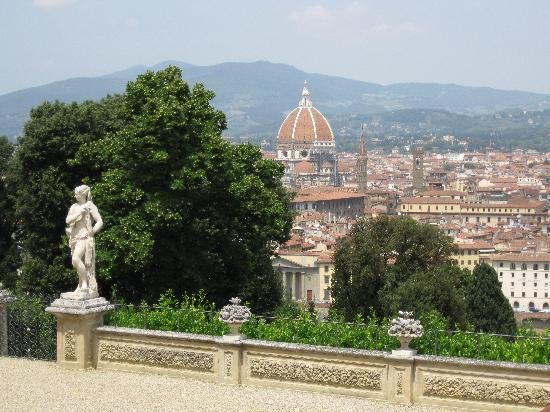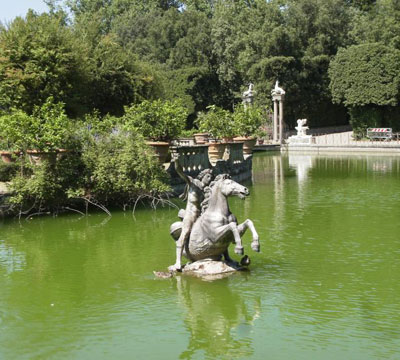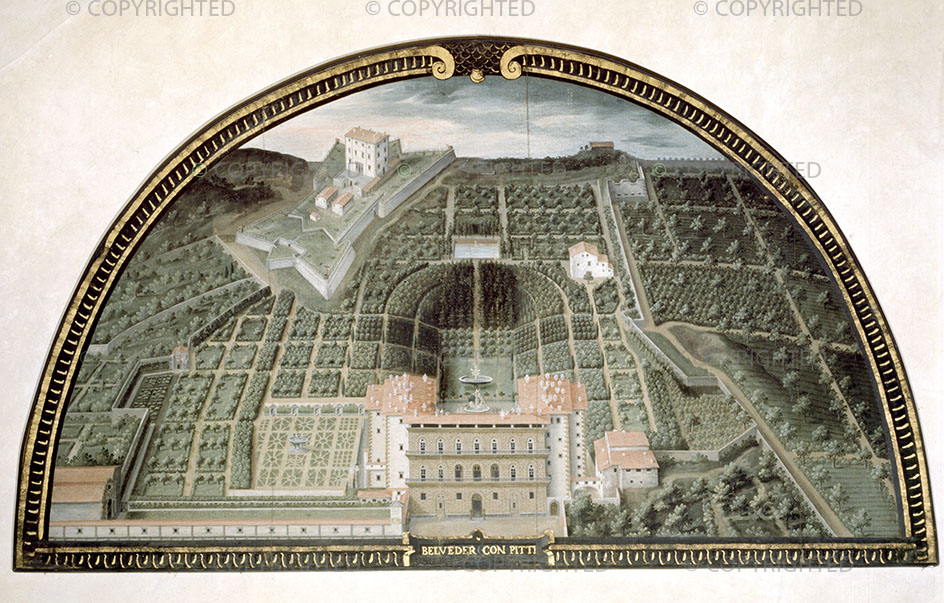
Boboli Garden
This post is also available in:
 Italiano (Italian)
Italiano (Italian)
English translation by www.wetheitalians.com
Boboli Gardens (Giardino di Boboli) is a historic park in the city of Florence. It extends behind the Pitti Palace, which was for nearly four centuries the residence of the grand dukes of Tuscany and for a short period of the kings of Italy. The Medici family was the first to ensure its accommodation, creating the model of the Italian garden that became an example for many European courts.
The large surface area of the Garden covers more than 485,000 square feet, expanded considerably in the seventeenth century, divided evenly along two main axes, from which develops the varied plot of the plants: not spontaneous, but rationally ordered and divided by hedges, terraces, avenues and paths that introduce to particular environments: clearings, gardens fences, buildings.
Boboli is a real open-air museum of ancient statues and renaissance, adorned with large fountains and caves, the most important of which is the “Grotta del Buontalenti”, a prime example of Tuscan mannerism of the late sixteenth century.
The gardens are closed on one side by the ancient walls of the city with the architectural elements of the Forte Belvedere and the “Giardino del Cavaliere” (“Garden of the Knight”), placed on a bastion of the walls built by Michelangelo in 1529. The main access to the garden is from the “Cortile dell’Ammannati” (“Ammannati Courtyard”), from which one can climb to the upper esplanade, with the amphitheatre, perhaps originally conceived as green architecture. Already in 1599 it was enriched from the stands still exist, surmounted by niches with enclosing marble statues and terracotta urns. In the middle of the amphitheatre there’s a granite tank from the Roman Terme di Caracalla and an obelisk brought to Rome in 30 BC from Egypt.
The second shelf is dominated by the Neptune hatchery or “Fontana del Forcone” (“Pitchfork fountain”), a large basin on whose central rock there is a bronze statue of Neptune (1565-1568).
On the last shelf stands the colossal “Statua dell’Abbondanza” (“statue of Abundance”), begun in 1608 by Giambologna, a Flemish sculptor active in Italy at that time. To the right one can reach the scale that goes up to the eighteenth-century building known as the “Casino del Cavaliere” (“Knight hut”), which houses the Porcelain Museum. Nearby is the Kaffeehaus, a rococo style pavilion with an exotic windowed dome, considered the visual focal point of the second axis of the park, the Viottolone, a long avenue of cypress trees flanked by statues from seventeenth and eighteenth centuries. The “Viottolone dell’Isolotto” leads to the square, a late Mannerist complex began in 1618, surrounded by high hedges with statues, and occupied by a circular basin which has a central island.
This post is also available in:
 Italiano (Italian)
Italiano (Italian)
Contatti
Piazza Pitti 1 - Firenze(FI)
055 218741
info@giardinodiboboli.it
http://www.giardinodiboboli.it/
Altre info
Intero 7,00 euro; ridotto 3,50 euro
Aperto dal martedì alla domenica e il secondo e terzo lunedì di ogni mese; Chiuso il 1° gennaio, il 1° maggio e il 25 dicembre
8.15-16.30 da novembre a febbraio; 8.15-17.30 marzo; 8.15-18.30 aprile, maggio, settembre, ottobre; 8.15-19.30: giugno, luglio e agosto
